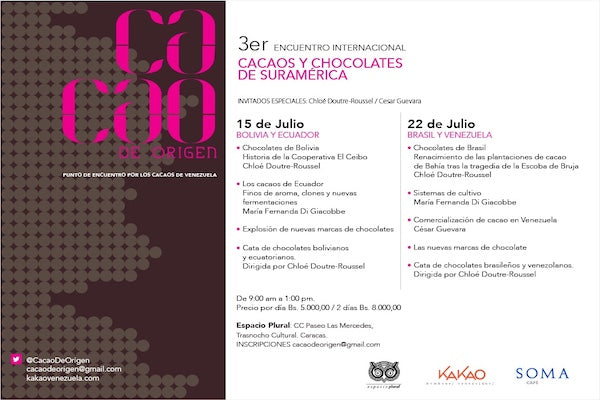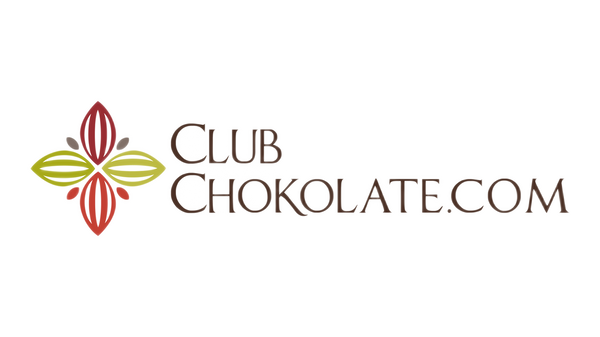
Gourmet Chocolate "mafia," I’m inside, and I have no intentions of leaving
In 2015, I started to take more serious the gourmet chocolate experience. I decided to attend all the possible events where I could learn a little more about this fascinating world. I couldn’t pick a better opportunity to start than this one. I went to the "3er Encuentro Internacional Cacaos y Chocolates de Suramérica" where I was lucky to meet two people that, not only know a lot about cacao and gourmet chocolate but also have a very passionate way of communicating their knowledge. María Fernanda Di Giacobe, from Caracas, international ambassador of the Venezuelan cacao, and the French Chloé Doutre-Roussel, an international expert in chocolate. They, besides their knowledge, brought gourmet chocolate bars from different countries, which is not easy to find in just one place, at least in Caracas.
Before moving on to the essence of this event, they discussed things that apparently were obvious to everyone, except for me (or at least I was the one who was least willing to hide his ignorance). For one, they emphasized the difference between a good cacao and real gourmet chocolate. Then, some countries produce superb cacao, but the process after the harvest is not the best one; as a result, the chocolate made can be of poor quality. They mentioned that the natural character of the cacao bean is of extreme importance, but also being careful in the harvest, fermenting and drying that follows. Lastly, to make the best gourmet chocolate in the world, one must pay particular attention to the roasting. In fact, in mass production, the low quality and defects of the cacao it's hidden by roasting it in excess. For instance, this is done to cover that too many types of mediocre cacaos were used in the making of a chocolate bar.
Later, in different presentations, they said that many countries claim to have the best cacao in the world and this reputation comes from its exports, that is to say, that they only export their good quality cacao. Also, international brands can make chocolate using a particular cacao, from a specific place; however, local names can make gourmet chocolate with local cacao beans. In Venezuela, the first brand that did the latter was "El Rey," in 1995. After the year 2005, other producers followed in Latin America and the Caribbean; and the most commonly knows are from Ecuador.
In another post, I will keep reporting some essential elements that I learned in this meeting and something about the Bolivian, Ecuadorian, Brazilian, and Venezuelan gourmet chocolates that we tried… I can tell you that after listening to the experts, I’m tempted to go running to a cacao farm and start making chocolate like a “madman”. For now, I can tell you that I feel like if I have entered the "mafia," a hobby from which is complicated to leave after one has begun.
Daniel E. Martínez






